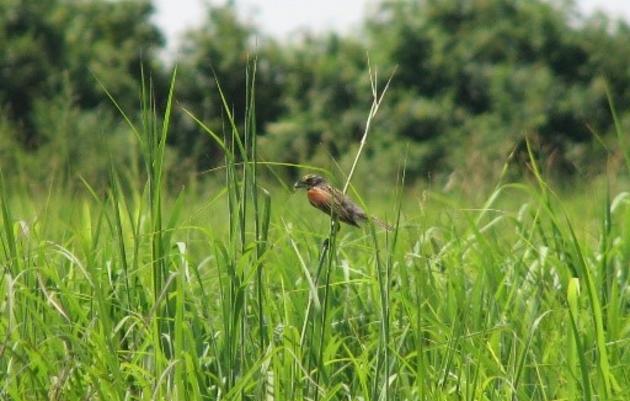Attempts are underway to rebuild grassland bird populations
by December 2, 2019 6:01 pm 451 views

Rotational stocking and other management practices may give grassland birds a chance to rebuild their populations, said Dirk Philipp, associate professor-animal science, for the University of Arkansas System Division of Agriculture. For decades, the number of grassland birds has been on the decline, according to the United States Department of Agriculture. The losses can cause crop and ranch declines.
“A recent report in the journal ‘Science’ indicated that there has been a decrease of about one-third in bird abundance across landscapes of the United States,” he said. “Large losses have occurred across landscapes in the central United States over the past few decades, with about 74% of grassland bird species declining, mostly due to habitat loss due to a variety of reasons.”
These losses can impact ranchers and row crop farmers. Grassland birds are a natural insecticide as they consume large quantities of insects in and around agriculture fields, USDA reported. Raptors feed on mice and other rodents that attack crops, and birds help in the re-seeding and pollination process.
Philipp said ranchers can provide for both their livestock and grassland birds with judicious use of grazing management practices.
“Grazing, by and large, can enhance habitat for grassland birds via grazing methods other than just continuous stocking,” he said.
With rotational stocking, animals usually return every four weeks to the same paddock — not enough time for breeding ground-nesting birds to raise their young.
“The key is to schedule grazing and rotating animals through paddocks that leave rest periods in some paddocks that are long enough so that birds can build a nest and successfully raise their young, all in six weeks,” Philipp said.
Philipp offered some tactics to enhance grassland bird habitat while keeping the livestock operation productive, based on experience elsewhere in the central United States.
- Select paddocks for the habitat away from tree lines and wooded areas – areas that can harbor predators of birds.
- Don’t graze the habitat paddock between early May and early July to enable the birds to nest and raise young.
- Build additional paddocks around one or two of the habitat paddocks.
- These paddocks, which become refuges for wildlife, can contain legumes or other broadleaf forage, which provide better quality forage when harvested or grazed later than normal.
- Having a refuge paddock in the middle of everything increases the total inhabitable grassland as a food source and retreat.
- Don’t graze the surrounding paddocks sequentially, but rather, in an alternating fashion. This will increase ground cover adjacent to the refuge paddocks.
- Leave at least 4 inches of standing forage after each grazing.
- In July, the habitat/refuge paddocks can be grazed or mowed as desired.
Philipp said the paddocks should have some form of grazing, “as this will deposit nutrients back to the soil, provide insect habitat on which birds rely, and provide a less even ground cover that may be more beneficial for birds including their food sources.”
